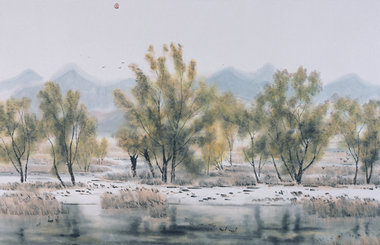Protecting the antelopes
By Yang Yang ( China Daily ) Updated: 2017-11-11 09:46:48
On many summer nights in the 20 years since he arrived in Hoh Xil, at 4,600 meters above the sea, from his hometown in the Yushu Tibetan autonomous prefecture in 1997, he and his fellow patrolmen have had to remain in their tents with their guns loaded as they listened to the heavy breathing of brown bears.
"Typically it was a family, a mother leading two or three cubs. But they never came in and would just circle our tents for several hours and leave," he says.
Tsering landed in Hoh Xil in 1997, two years after being discharged from military service.
Since he blacked out due to altitude sickness two years ago and stayed in bed for 20 days, he has been transferred to the publicity department of Hoh Xil National Nature Reserve Administration in Golmud, the second largest city in Qinghai in terms of population. Earlier this year, Hoh Xil was listed by the UNESCO as a world natural heritage.
Speaking of how he decided to take the job 18 years ago, he says: "I had heard about illegal hunting there, and the sacrifice of Sonam Dargye to protect Tibetan antelopes.
"My mother didn't want me to go, worrying about the altitude. But I didn't worry that much."
Describing the job, he says that the first patrolmen in Hoh Xil-Tsering and the other members in the protection station at Wudaoliang-only knew that they were there to protect Tibetan antelopes, but no one had seen one or knew what they looked like.
|
|
|
|
|
|
|
|


























 Raymond Zhou:
Raymond Zhou: Pauline D Loh:
Pauline D Loh: Hot Pot
Hot Pot Eco China
Eco China China Dream
China Dream China Face
China Face






